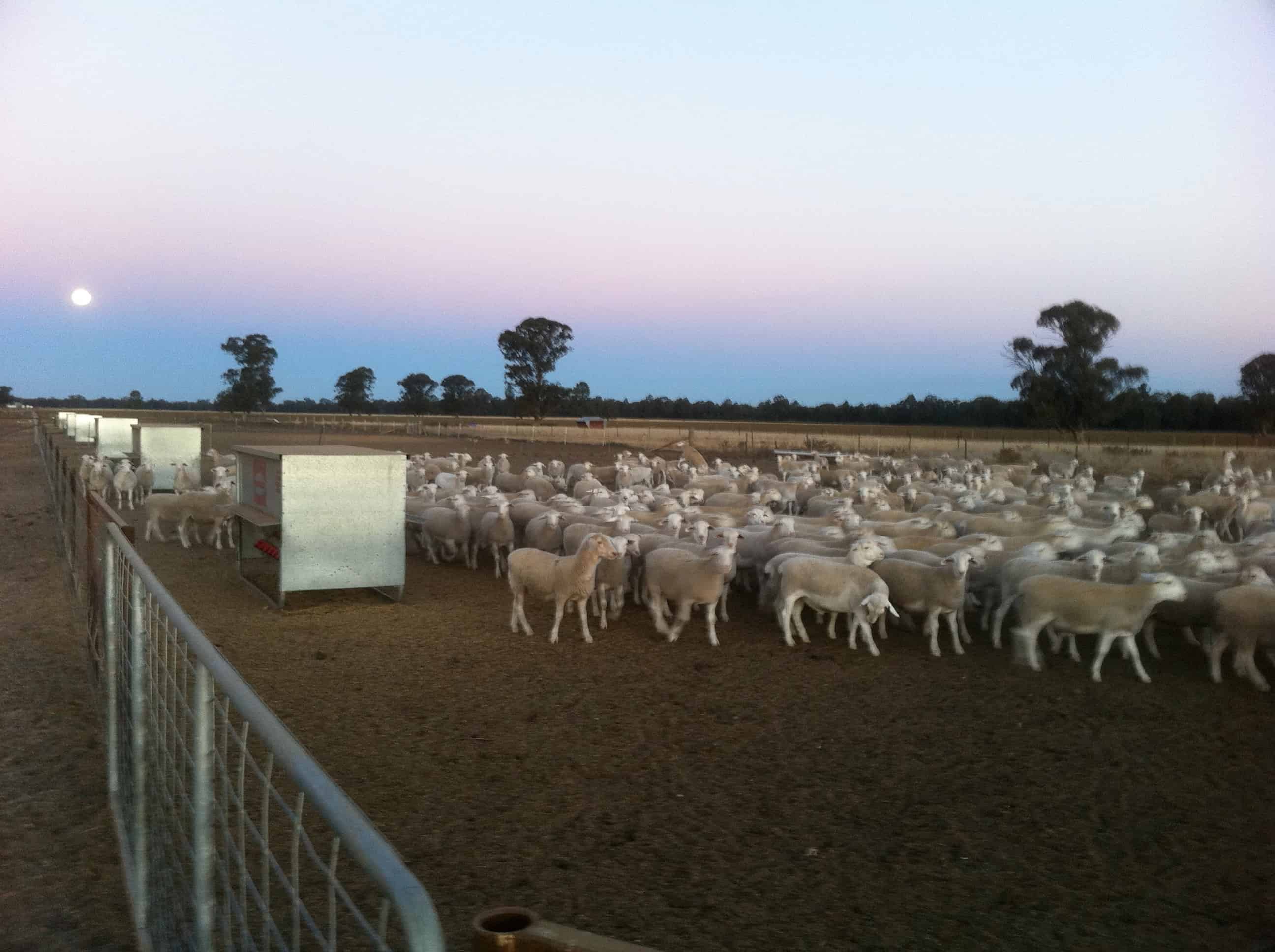Effective management of induction is without doubt, the most important aspect of a lamb feedlot program.
Safety at induction is paramount, and relies on:
- a quality rumen pH premix formulation eg. ProTect S added to your grain
- the delivery of a correctly measured amount of ration to each lamb daily (preferably in multiple daily feeds)
Q. Why are induction times important when transitioning to grain-based feeds?
A. focus on induction times is important because time and money can be wasted if a swift and safe induction program is not in place. Delivery of a consistent daily amount of grain per lamb, increasing over a set number of days with regular feeds* (twice daily) will deliver a real reduction in the time it takes for lambs to achieve terminal intake (full feed intake).
Induction can be completed in as little as 7 days when implementing this program. Some practised feeders are able to implement a 5-day program with no mortalities (speak to the ProAgni team for more information on this program).
*Available fibre is required through this period to add to the safety equation and shouldn’t be removed for 4-5 days post terminal intake being achieved.
Q. How does ProAgni Protect work during transition?
ProAgni Protect S crumble works on a number of aspects of rumen pH management to provide a level of safety that enables a more rapid induction.
An important part of safety in a grain feeding program is to add buffers to the diet to help minimise the fall in rumen pH (acidosis) that occurs following the ingestion of grain. Protect S crumble contains a number of compounds that assist in maintaining a more productive rumen pH following intake of grain.
In addition, ProTect S focuses on increasing the vibrancy of rumen microbiology with an emphasis on producing higher levels of volatile fatty acids used in energy production and reducing the levels of lactic acid produced. Lactic acid production is a normal part of digestion when lambs are on a grain diet.
The result is better maintenance of rumen pH levels that support improved growth, health and feed efficiency in lambs.
Q. How to prepare for transition and what to look out for?
A. The most effective approach to an induction is to bring all lambs up to terminal intake with each lamb having access to a feed face that allows each to eat a similar amount of grain at the same time as all other lambs. This is best achieved by a trail or trough feeding technique.
Warning – An induction program that utilises the incremental opening of lick feeders in a confined area or pen, does not allow even access to grain by all lambs and increases the chance of mortality. The behavior set up in that style of program persists throughout the feeding period, leading to shy feeders, inconsistent intake, sub-clinical acidosis and many lambs on feed for long periods of time, reducing feed efficiency and increasing the cost of each kilogram gained.
Q. What can ProAgni ProTect S crumble do for my livestock and bottom line?
A rapid induction program with no mortalities is very achievable and a great way to increase the margin in any feedlot program. ProAgni Protect S crumble, when coupled with good animal and infrastructure management through the feeding period, delivers robust rumen pH management that allows for ‘no fibre feeding’ leading to more rapid weight gain, improved feed efficiency and reduced time on feed.
Lambs with high growth potential, have a high requirement for a range of micro-nutrients that support lambs to grow more rapidly and to remain healthy through the feeding program. ProAgni Protect S crumble is designed to deliver high levels of the most available and effective forms of vitamins, minerals and trace elements that allow lambs to perform at their genetic potential.
Feedlot lambs have a huge potential for daily weight gain and feed efficiency. The genetic potential over the past couple of decades has redefined growth performance – nearing that of growing pigs. For us to achieve the same potential, we need to be as focused on nutrition and management as our brothers in the pig industry. That will require a refinement in our thinking about induction, the feeding period and better managing curfew and transport phases.

